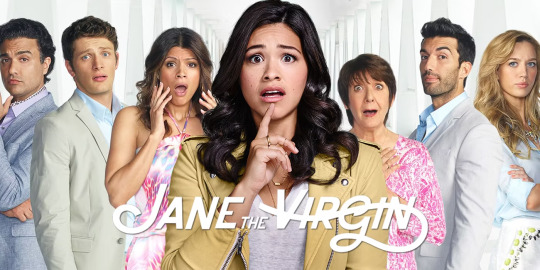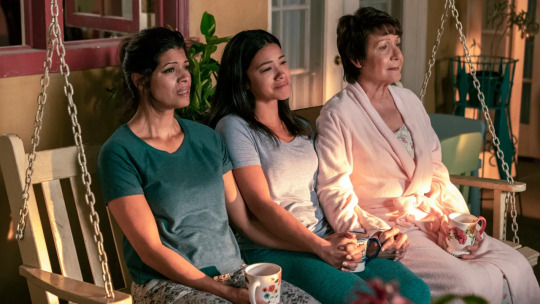Don't wanna be here? Send us removal request.
Text
Tumblr #3: Cultural Fluidity in Yes Theory
With over 8.64 million subscribers, the Youtube channel Yes Theory has easily made an important global impact during a time of subscriptions, views, and thumbs up. Beginning in 2015 with Ammar Kandil from Egypt, Thomas Brag from France, Matt Dajer from the U.S., and Derin from Turkey, the group has created a social media platform whose mission is simple: seek discomfort. Over the years, Yes Theory has filmed hundreds of videos from hundreds of different countries around the world, displaying their cultures while pushing themselves to work outside of their comfort zones. An inspiring and eye-opening platform, Yes Theory has been a revolutionary channel that promotes diversity, equal rights, and justice for those who deserve it.

Some of the main subjects within Yes Theory are the importance of ethnic identities, the role of multiculturalism within different countries, as well as acceptance of a diverse world. To begin, as written by Sturken and Cartwright, “-we make meaning of the material world through understanding objects and entities in their specific cultural contexts” (Sturken & Cartwright 2009). A topic commonly discussed in ART 150, the channel often and openly discusses multiculturalism, as well as its importance in modern society today. One of their goals is to accurately represent the many different cultures around the world in a context within the material world, as Sturken and Cartwright discuss.
Additionally, Yes Theory embodies many different ethnic identities within their members, as seen in the wide range of nationality between the four producers. As seen in the photo below showing one of Yes Theory’s members, Matt, holding a sign that says “Now is not the time to be comfortable- act now and seek discomfort”. This is in reference to one of the missions of the channel to push the concepts of multiculturalism and ethnic identities in a world that sees these identities as limiting rather than beneficial to society as a whole.

While not said blatantly, Yes Theory actively protests against discrimination and seeks justice - just as they seek discomfort- for those wronged by systematic racism. Peggy McIntosh states, “I was taught to see racism only in individual acts of meanness, not in invisible systems conferring dominance on my group” (McIntosh 1989). This displays the many problems and injustices systematic racism has created across the world today as discussed in ART 150, and Yes Theory is known for making people “uncomfortable” by bringing these issues to light within their videos. Continuing, many of the “privileges” McIntosh mentions in her article are “privileges” that Yes Theory has brought up in their videos within different countries. In fact, they are revealed not to be “privileges”, but rather opportunities that should be accessible to everyone. This is therefore continuing to challenge and bring to light to invisible but not so invisible systematic racism that is present in society.
Lastly, with the vast amount of followers Yes Theory has attained, the channel plays a vital role in representation among popular visual culture. For example, in the exhibit “Mixed Blood” by CYJO, the artist includes stunning visuals of multiculturalism within families with countless ethnicities, nationalities, and races. The image below is an image from CYJO’s exhibit, featuring a family of Nigerian, Russian, Scottish, Jewish, and Cuban ancestry. Likewise, Yes Theory shares similar visuals within their channel, such as the ethnic representation within their four members. The next image below is of the four members of the channel, clearly of different ethnicities and nationalities, yet they all share a similar goal with similar motivations. These similar visuals of many different ethnicities all together in one photo reveals the importance of cultural fluidity within popular visual culture and its positive impacts on friendship, family, as well as well-being.

From CYJO's "Mixed Blood" exhibit

Ultimately, Yes Theory’s goal to seek discomfort has brought on representation of ethnic identities, multiculturalism, and cultural fluidity while revealing systematic racism and the need for justice.
Citations:
Cummings, Mary. “The Powerful Global Impact of Yes Theory” Cultures The Global Multicultural Magazine.
CYJO. “Mixed Blood”. The Asian American Literary Review.
McIntosh, Peggy. “White Privilege: Unpacking the Invisible Knapsack” Peace and Freedom, July/August 1989.
Pinili, Kevin. “5 Life Lessons I Learned From Yes Theory” Medium. July 5, 2020.
Sturken, Marita and Lisa Cartwright. “Practices of Looking: An Introduction to Visual Culture” Oxford University Press. 2009.
0 notes
Text
Tumblr Post #2: Encanto
The popular family movie Encanto directed by Byron Howard and Jared Bush shows the lives of the Madrigals, a Hispanic family whose children inherit magical powers gifted by their ancestors in honor of their passing grandfather. Filled with music and laughter, at first it seems like the Madrigals are the perfect family, using their gifts to help their village and support each other… until Mirabel, one of the Madrigals, does not receive her unique gift. From there, the audience witnesses as the troubles and sorrows of the Madrigals are revealed over the generations. This movie stars Stephanie Beatriz, John Madrigal, and Maria Cecilia Botero.
Encanto’s subject reveals the importance of family and heritage, as well as healing from generational trauma in a multicultural family. As mentioned in ART 150, there is a commonly unstated but vastly important role of heritage within families. As Gregory Jay states, “Despite its problematic basis, ‘race’ can be a powerful reality for organizing social, political, and cultural activity that affirms a group’s identity and furthers its interests” (Jay). The Madrigals use their Hispanic heritage as a basis for their identity, and make it a priority within their family to maintain their customs and traditions, such as receiving their magical gifts. Encanto uses ‘race’ as a notion of power and love, rather than hate and disharmony like in some places today. The movie goes to show how culture and tradition play a vital role in family and friendship, even across cultures and races. This is a very important theme and is something frequently discussed within the discussions of ART 150.

Continuing, Encanto also represents cultural diversity through cross-racial relationships and the representation of ethnic identities within the Madrigals. For example, Mirabel’s mother and father exhibit multiracial love as a Hispanic and white couple who share each other’s cultures rather than suppressing one or the other, as well as raise their children to appreciate and understand both cultures. Gonzalez writes, “It becomes clear when looking at these and other historical precedents that race has long been an importantly visual system of power whose parameters have been the focus of every innovation in visual recording devices” (Gonzalez 2003). Through visualizing the Madrigal’s ethnic identities, they create a system of power within their household that reveals the strength of their heritage. This also reflects the importance of Encanto as a movie, where the audience has constant visuals of the family dynamics, as well as the inclusion of their separate ethnic identities. Encanto creates a commonly unsaid meaning as the screen contains visuals of Hispanic food, decorations, instruments, and music. There is also the visual representation of the many different types of Hispanics within the Madrigal family, such as Afro-Latino, non-black Latino, and more. This continues to support the cultural diversity within Encanto.

Similar to the idea of visual cultural diversity, Encanto represents generational trauma within a multicultural family in popular visual culture. One of the reasons why Encanto became so popular so quickly is because of the many meanings within the movie that many people could relate to. Sturken and Cartwright expressed this, saying, “Barthes referred to photographic truth as myth not because he felt that photographs do not tell the truth but because he regarded truth as always culturally inflected, never pure and uninfluenced by contextual factors” (Sturken & Cartwright 2009). In this case, the Madrigal family was the “picture” of perfection, instilled into them by Abuela Madrigal. Abuela had the belief that in order to preserve their magical gifts and Hispanic heritage, the family must selflessly serve the community. This is where the subject of general trauma comes in, originating in Abuela Madrigal when her husband was killed by conquerors as the couple was forced to flee their home. When Abuela received the magical candle as a gift of her husband’s passing, she instilled the idea of selfless perfection into the family, in order to “deserve” the candle and make her husband proud. However, throughout the movie, Mirabel works with her grandmother to overcome the trauma together and use their history and ethnic identities to unite the family. It is a powerful message that can relate to many people viewing the movie, and displays a topic that repeatedly comes up in the ART 150 discussions.

Overall, Encanto shows an example of a movie displaying the importance of displaying heritage in a multicultural family struggling with generational trauma in popular visual culture.
Citations:
Gonzalez, Jennifer. “Morphologies: Race as a Visual Technology”. International Center of Photography, December 2003.
Happ, Deborah. “Encanto Understands the Overwhelming Pressure Put Upon Latin American Women” Tor.com, March 30, 2022. Accessed 12/8/2023.
Jay, Gregory. “Terms for Multicultural Studies: Defining ‘Race’, ‘Ethnicity’, and ‘Nationality’” University of Wisconsin- Milwaukee.
Mendoza-Contreras, Maria. “How ‘Encanto’ fits into Disney’s mission of promoting inclusion” The Emory Wheel, March 25, 2022. Accessed 12/8/2023.
Ott, Christopher. “Home is where the magic lives with Disney’s Encanto” Disney, November 21, 2022. Accessed 12/8/2023.
Sturken, Marita, and Lisa Cartwright. “Practices of Looking: An Introduction to Visual Culture” Oxford University Press, 2009.
0 notes
Text
Tumblr Post #1: Diversity and Multiculturalism in Jane the Virgin
Jane the Virgin, a hit Netflix TV series following the life of Jane Gloriana Villanueva, a 23-year-old Latina who finds herself pregnant after an accidental artificial insemination by her doctor. The episodes show Jane and the baby’s father Rafael Solano as their lives change with drama and heartbreak. The telenovela is narrated by a seemingly unknown narrator, however is later revealed to be Jane and Rafael’s son, Mateo. Directed by Justin Baldoni and starring Gina Rodriguez, Justin Baldoni, and Yael Grobglas, this TV series strikes the heart of many and shows the struggles of parenthood, as well as the importance of their Hispanic culture.

Jane the Virgin directly displays many of the course topics in ART 150, including the idea of multiculturalism and application of White perspective on a non-white family. For example, in “What is Multiculturalism” written by Gregory Jay, he states, “The concept of ‘multiculturalism’ also has a history rooted in theories of human rights, democracy, human equality, and social justice” (Jay 2011). This is extremely applicable to Jane the Virgin as one of the show’s most important themes is the importance of heritage, maintaining one’s culture, and being proud of where they came from. Jane’s grandmother, Alba Villanueva, was an immigrant who came to America to follow her dream, and she constantly is expressing their Hispanic culture, as well as speaks in Spanish to help remind her daughter and granddaughter who they are and where they came from. Additionally, Richard Dyer in “On the Matter of Whiteness” writes, “The media, politics, and education are still in the hands of white people, still speak for whites while calming and sometimes sincerely aiming to speak for humanity” (Dyer 2003). In the TV series, there are many times where Jane or her son Mateo are discriminated against or underestimated because of their race. It is made obvious to the audience that oftentimes white people overgeneralize and stereotype certain races for the entire population, and Jane’s family activity combats this through their careers and writing.

Continuing, Jane the Virgin also displays intersectionality in the two main characters- Rafael and Jane. In a later season, Rafael discovers his biological parents are from Italy and are not Hispanic, changing his entire identity. Similarly, in the article “Black? White? Asian? …” by Susan Saulny, she explains, “Multiracial and multiethnic Americans… are one of the country’s fastest-growing demographic groups” (Saulny 2011). The struggles and highs of having an identity in more than one race is shown as Rafael learns to accept and redefine himself as an Italian and Latino, a concept recently discussed in ART 150.
Another way intersectionality is displayed is through Jane, who struggles with balancing her identity as a Latino woman, mother, writer, and daughter. Rather than dismiss some of her identities and prove others to be more important, this TV series allows Jane to realistically and sustainability balance her life in a way where she can be proud and active in her culture, as well as succeed in a career and as a mother. This is very important because there are many stereotypes displayed in popular visual culture, such as feminism dismissing maternal roles, or Latina stereotypes within immigration, religion, low income, criminal activity, etc. Jane the Virgin shows that Jane is an active and brilliant Latina whose grandmother is an immigrant, but has been able to provide for her family. This series disrupts the ideas closely related between ethnicity and negative assumptions, specifically assuming that migrants will be involved with criminal activity or will have a low income. There is a great importance in displaying the beauty and power of a Latina woman who has access to just as many opportunities as anyone of any other race (specifically white).

Furthermore, many discussions held in ART 150 are applicable to Jane the Virgin, specifically in the diversity that the TV series intertwines effortlessly into the plot. From having the main character be a Latina woman, to breaking stereotypes about Latina motherhood, Jane the Virgin displays multiculturalism and intersectionality in popular visual culture in a unique way. Rather than using humor to gloss over cultural struggles and discriminations, or having colored characters “not fit in” to ease the awkwardness, the series uses empowerment and raw emotions to convey its characters in all dimensions- identity, culture, age, and history.
Work Cited:
Dyer, Richard. “On the Matter of Whiteness” International Center of Photography, New York. December 2003.
Jay, Gregory. “What is Multiculturalism?” University of Wisconsin- Milwaukee. July 2011.
Martinez, Diana. “‘Jane the Virgin’ Proves Diversity Is More Than Skin Deep” The Atlantic, October 19, 2015, https://www.theatlantic.com/entertainment/archive/2015/10/jane-the-virgin-telenovelas/409696/. Accessed 12/2/23
Perez, Lluvia. “Jane the Virgin’s Impact On American Viewers and Latinx Storytelling” Teenvogue, August 1, 2019, https://www.teenvogue.com/story/jane-the-virgin-impact. Accessed 12/2/23
Rose, Lisa. “‘Jane the Virgin;” The CW.
Saulny, Susan. “Black? White? Asian? More Young Americans Choose All of the Above” The New York Times. 29 January 2011
Torres, Rae. “‘Jane the Virgin’ Cast Guide”. Collider, October 2, 2021, https://collider.com/jane-the-virgin-cast-now-where/. Accessed 12/2/23
1 note
·
View note